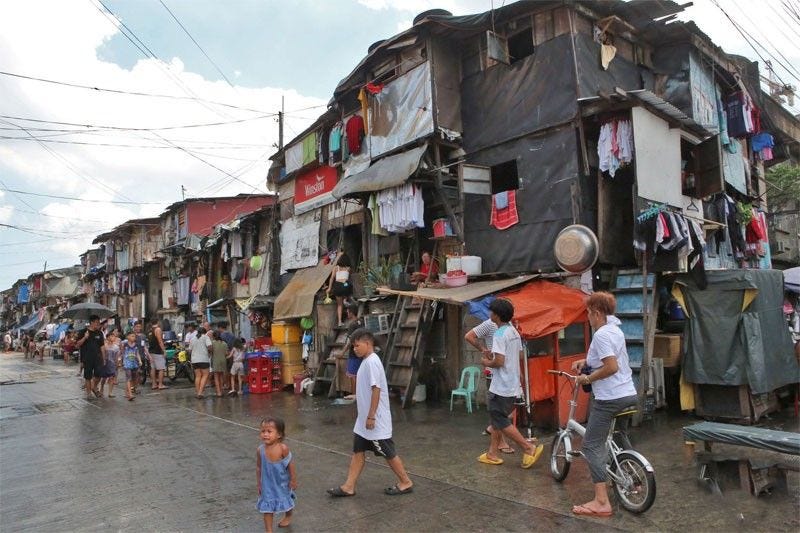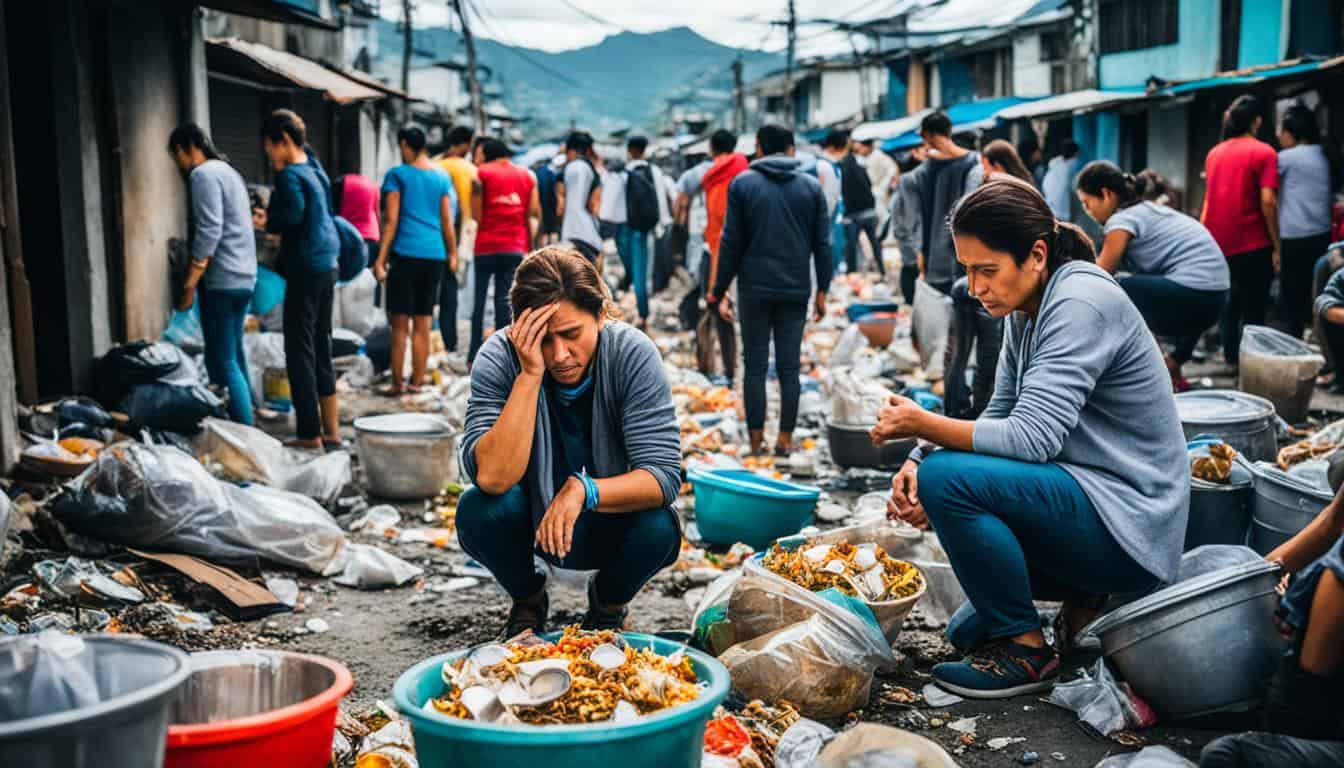The Philippines, a Southeast Asian nation of over 110 million people, continues to grapple with poverty despite recent economic strides. While the government aims for a single-digit poverty rate by 2028, significant challenges remain. Let’s delve into the current state of poverty in the Philippines in 2024, analyzing the latest statistics, causes, and government initiatives.
A Glimmer of Hope: Poverty Rate Shows Decline
There’s some positive news. The Philippine Statistics Authority (PSA) reported a national poverty rate of 22.4% in the first half of 2023, a slight decrease from 23.7% in the same period of 2021. This translates to roughly 25.24 million Filipinos living below the national poverty line, compared to 26.14 million in 2021.
Additionally, a survey by Tugon ng Masa in March 2024 revealed a self-rated poverty rate of 42%, a 3% drop from the previous quarter.
However, these figures paint an incomplete picture. The World Bank projects a poverty rate of 17.8% in 2021, falling to 13.7% in 2023 and 10.7% in 2024. Discrepancies between methodologies and data collection periods contribute to these variations.
A Persistent Challenge: Deep-Rooted Causes of Poverty
Despite progress, poverty remains a significant concern in the Philippines. Several factors contribute to this ongoing struggle:
- Low and Uneven Economic Growth: The Philippines has witnessed moderate economic expansion in recent years, but growth hasn’t translated effectively into poverty reduction. This limited impact is partly due to the uneven distribution of wealth and limited opportunities in certain sectors.
- Job Market Issues: Weak employment generation and a lack of quality jobs plague the Philippine workforce. This creates a situation where many Filipinos are employed but still struggle to meet basic needs.
- Stagnant Agricultural Sector: The agricultural sector, a significant source of income for many Filipinos, hasn’t seen full development. This hinders progress and traps families in a cycle of poverty.
- High Inflation and Inequality: Rising inflation erodes purchasing power, making it harder for low-income families to afford basic necessities. Furthermore, high and persistent income and asset inequality further marginalize vulnerable populations.
- Rapid Population Growth: The Philippines’ high population growth rate puts pressure on available resources and limits the effectiveness of poverty reduction efforts.
These factors intertwine, creating a complex web of challenges that the Philippines must address to achieve sustainable poverty reduction.
Weathering the Storm: The Impact of COVID-19 and Climate Change
The COVID-19 pandemic significantly impacted the Philippine economy, pushing more Filipinos into poverty. However, the economy has shown signs of recovery, with GDP growth reaching 5.9% in the third quarter of 2023.

Another major concern is climate change. The Philippines is highly vulnerable to natural disasters like typhoons and floods, which can devastate agricultural production and displace communities. These events exacerbate poverty and hinder progress.
Government Initiatives: Taming the Tide of Poverty
The Philippine government has implemented various programs to address poverty:
- Targeted Social Programs: These programs provide financial assistance and support services to low-income families. Examples include the Pantawid Pamilyang Pilipino Program (4Ps), which offers conditional cash transfers for education and healthcare.
- Allowance and Savings Programs: The government offers allowances and savings programs to help low and moderate-income families cope with inflation.
- Economic Growth Reforms: The government aims to accelerate economic growth through infrastructure development and investment initiatives. These efforts aim to create more jobs and boost overall economic activity.
The success of these initiatives hinges on effective implementation, efficient resource allocation, and addressing issues like corruption and mismanagement.
The Road Ahead: Challenges and Opportunities
While the Philippines has shown progress in reducing poverty, significant challenges remain. Meeting the ambitious target of a single-digit poverty rate by 2028 requires robust and sustained efforts. Here are some key areas for focus:
- Investing in Education and Skills Development: Equipping Filipinos with relevant skills is crucial for securing higher-paying jobs and escaping the poverty cycle.
- Promoting Inclusive Growth: Economic growth needs to be inclusive, ensuring benefits reach marginalized populations and geographically disadvantaged areas.
- Empowering Women: Empowering women through education and economic opportunities can significantly contribute to poverty reduction.
- Strengthening Social Safety Nets: Expanding and strengthening social safety nets will provide a vital safety cushion for vulnerable populations during economic downturns and natural disasters.
- Addressing Climate Change: Investing in climate-resilient agriculture and infrastructure is crucial to mitigate the impact of climate change.
- Promoting Transparency and Accountability: Effective implementation of poverty reduction programs requires transparency and accountability within government institutions. Addressing corruption and mismanagement ensures resources reach those most in need.
- Fostering Collaboration: Collaboration between the government, private sector, and civil society organizations is essential for developing and implementing comprehensive solutions.
Looking Forward: A Brighter Future for the Philippines?
The Philippines faces a complex challenge in eradicating poverty. However, the nation’s recent economic growth and declining poverty rate offer a glimmer of hope. By addressing the root causes of poverty, investing in strategic initiatives, and fostering collaboration, the Philippines can work towards a brighter future where all Filipinos have the opportunity to thrive.
Here are some additional points to consider:
- The Role of Technology: Technology can play a crucial role in poverty reduction. Initiatives promoting financial inclusion, e-commerce opportunities in rural areas, and access to online education can empower Filipinos and create new avenues for economic participation.
- Monitoring and Evaluation: Regularly monitoring and evaluating the effectiveness of poverty reduction programs is essential. This allows for adjustments and ensures resources are used efficiently.
- Engaging with the International Community: Collaboration with international organizations and development partners can provide valuable expertise, funding, and technology transfer opportunities.
The future of the Philippines’ fight against poverty hinges on the collective effort of the government, citizens, and the international community. By acknowledging the challenges, implementing effective solutions, and fostering a spirit of collaboration, the Philippines can build a more inclusive and prosperous future for all its citizens.

